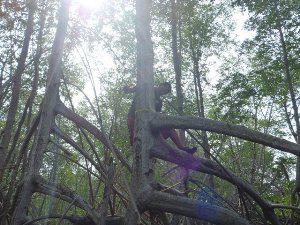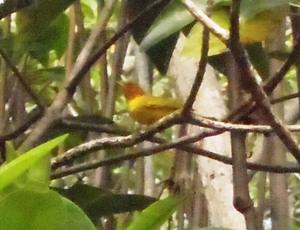Ewa Oleksinska
The aim of the project is to learn about state of mangrove ecosystem in Hawaii area. The main objectives are to:
-estimate annual water quality cycles and changes along the course of the Chquimulilla Channel;
-learn about state of mangrove forest; monitor bird species living in the area and their distribution.

The Area of Multiple Use Hawaii is located in the southern part of Pacific slope of Guatemala. Mangrove ecosystem of AUMH provides vital conditions to many species of economic and biological importance. Mangrove forest enables reproduction of more than thirty species of fish, that utilize it for protection during the first phases of their lives. The majority of crustaceans and molluscs live, are fed and reproduce inside mangrove forest. More than 30 bird species of Guatemala live specifically in mangrove. Many species are seriously threatened in the Pacific coast of Guatemala and mangrove forest of AUM Hawaii is their last refuge.

The mangrove forest of AMUH, besides its natural beauty and biological importance also forms the base for a local economy and human subsistence. Dynamic and hydrobiology caused by tides and river floods provide the ideal conditions for the maintenance of wetlands that are reproduction areas for fish, crustaceans, bivalves, shrimps and other economically important species. Mangrove is a very fragile ecosystem and it is very important to stability of costal marine environment, local fisherman and farmers who live in mangrove area. Unfortunately the entire mangrove region in Hawaii is a subject of a strong pressure from extensive wood cutting for construction and firewood.
Previously elaborated mangrove diagnostics gave a quantitive idea of Hawaii mangrove forest condition, but not qualitative. Mangrove ecosystem suffers from threats that exercise great pressure to the area. Mangroves are extremely susceptible to water contaminants that originate up the basin of coastal plain. Environmental contaminants are a serious problem due to lack of proper sanitary systems for residual water processing. Additionally, because there is no trash recollection system, local residents utilize secret scavengers that are often located inside the mangrove. These scavengers represent a threat to human health and to natural environment. In northern stripe of the area, sugarcane industry is expanding quickly, replacing areas that have been utilized for agriculture. Construction of irrigation canals and a private highway for sugarcane transportation, water contamination by fertilizers and sugarcane wastewater negatively affects mangrove ecosystem.
The project will add to on going efforts to recognize AMUH as a protected area. Scientific report with monitoring data will add to existing information on the topic. This will enable reinforcements of proper conservation laws and legislation that will help better protection of mangrove forest and species living in the area.